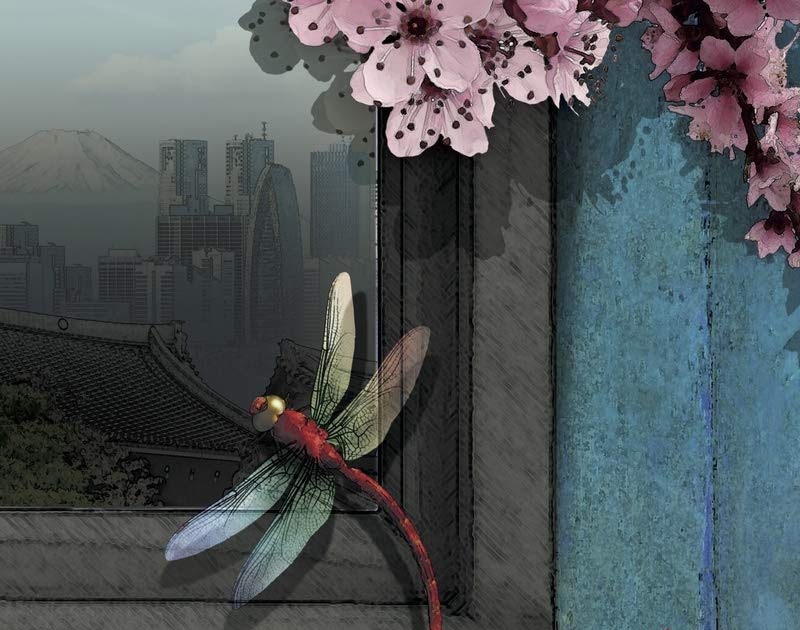
Original language: japanese
Original title: Haru no niwa (Spring Garden)
Translation: Madoka Hatakeyama
Year of publication: 2014
Valuation: Alright
If you go to Tomoka Shibasaki’s Instagram account (it’s a public profile, don’t think I’m a stalker) you’ll have a very good idea of the tone of this novel. Deserted cities, out-of-focus landscapes, dark alleys, flowers… There are hardly any people, and those who appear have their backs turned or are seen from afar, making it impossible to discern their faces clearly. It seems that Shibasaki seeks to reveal herself indirectly through those elements that influence and obsess her. Similarly, “The Spring Garden” (Akutagawa Award 2014) is populated by characters with diffuse outlines, with ambiguous and, at times, unpredictable personalities, resembling ghosts that wander through a city where time passes differently.
Taro, an office worker who resides in an apartment complex condemned for demolition, faces inevitable eviction. The constant movement of other tenants becomes part of the routine. Even without deciding his next destiny, Taro is not opposed to the change; rather he sinks into deep indolence. His quality as a survivor of that exodus makes him make friends with another of the tenants who stubbornly remains in his apartment. This woman tells him about her obsession with the neighboring house, a Western-style building with a peculiar design. This house was the home of a couple of artists, whose daily life was immortalized in a photographic album that ended up being published, and that that neighbor studies as a kind of Voynich Manuscript.
On the one hand, Shibasaki conveys the incessant mutability of a city like Tokyo, where businesses open and close, houses are demolished or renovated, the landscape is never the same. It seems like a place where it is impossible to put down roots. Everything is provisional and yet the routine persists, despite changing jobs, friends, or even homes. Maybe that existential crisis can lead you to absurd obsessions.
On the other hand, this small novel has an aura of mystery, although very tenuous. The characters seem to be hiding something, either from their past or from their character. For some reason, Taro keeps his father’s funeral remains in the closet. The imminent demolition of the apartment building appears to never be completed. The neighbor has no other reason for existing than that house and its inhabitants. Everything put on the table like this causes anxiety.
Shibasaki manages to capture a feeling of alienation and abandonment not only through his characters, but also through the environment that surrounds them. The narrative flows between the real and the dreamlike, focusing on creating an atmosphere of contemplation and mystery. The fascination with the neighboring house and its history immortalized in a photographic album is used to contrast the passage of time of everything and everyone around it. Through these elements, Shibasaki suggests how spaces and memories shape our identity and perception of the world.
“The Spring Garden” is a work that, despite its apparent simplicity, makes us think about existence, loneliness, and how we create a personal space that, in turn, ends up limiting us. With lyrical and evocative prose, this book is grateful for the small revelations and ephemeral pleasures of life that, ultimately, are the most we can aspire to.
Finally, I have to give a warning to all those who hate ambiguity and open endings. Reading this book can feel like watching a movie as you fall asleep.
Source: https://unlibroaldia.blogspot.com/2024/05/tomoka-shibasaki-el-jardin-de-la.html


